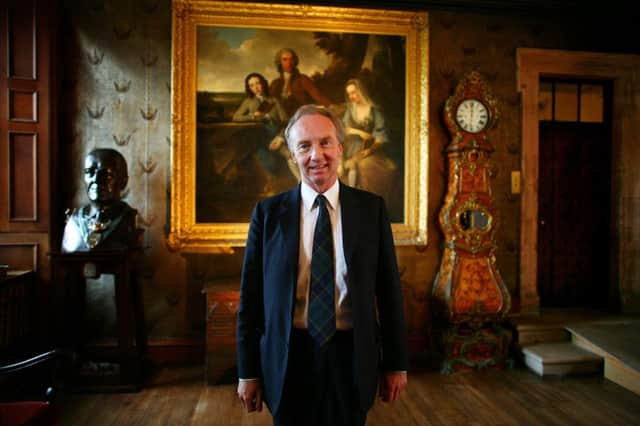So are you among the thousands of Scots with royal blood?


Amongst the Scottish dead was Sir John Stewart of Bonkyll, the lord of an estate in East Lothian. It must have seemed like a terrible end, but in fact, it was a beginning. Unknown to Sir John, a DNA marker (essentially a mistake in reproductive copying of the 6 billion letters of DNA he inherited from his parents) had arisen in him that would genetically define Scotland’s greatest royal dynasty. He carried R1b S781+, the marker of kings, the defining marker of the Stewart dynasty.
ScotlandsDNA is certain about this because our Chief Scientist, Dr Jim Wilson, sampled the DNA of living descendants of Sir John’s two sons and descendants of his brother, James, in the male line. The modern descendants of both of Sir John’s sons carry the Y chromosome marker S781+ but the descendants of his brother, James, did not have it. By a straightforward process of deduction, that means the marker arose in Sir John Stewart of Bonkyll and not in his father. If it had, the descendants of James would also carry it. And they do not. It is the first time it has been possible to link the creation of a genetic marker to a named historical individual in Scotland.
Advertisement
Hide AdAdvertisement
Hide AdThe second part of our findings is equally fascinating. Regardless of their family trees, 50 per cent of all men who have the surname of Stewart or Stuart are the direct descendants of Scotland’s long-lasting royal dynasty (who also came to rule over Britain and Ireland). This data has been derived from sampling of the general population by ScotlandsDNA.
There are about 70,000 carriers of the surname in Britain which means that about 17,500 men are of royal descent. Many of these live in Scotland and most do not know that they have royal blood. And it is certain that some men who do not carry the Stewart surname also carry the royal marker. They probably descend from an illegitimate son in an unbroken line.
As further confirmation, we tested the DNA of Richard, 10th Duke of Buccleuch. He is a direct descendant of Charles II and he carried the Royal Stewart marker that was passed down through the male descendants of Sir John Stewart of Bonkyll. But Richard Buccleuch is clearly not alone.
The reason there are so many descendants is very simple. In contrast to our (largely) monogamous society, powerful men had sex with many different women in the past, a phenomenon known as social selection. And for that reason, their Y chromosome lineages spread very much wider than they do now. Very simple.
Our recent sampling has shown that the Stewarts were not uniquely promiscuous. It appears that more than 10 per cent of all Scottish men are descended from patriarchs of some kind. A few are known, but many are not. It seems that several clans are indeed the children of a single individual and these groups can be substantial. The R1b-S690 Y chromosome marker is carried by many MacGregors, including their chief, Sir Malcolm. But what is striking is how many Scotsmen have it, more than 25,000. The patriarch who founded this old lineage may have been Iain Cam MacGregor and he lived in the second half of the 14th century. Many MacFarlanes, Hamiltons, Frasers and MacLeods are also descended from a single individual. But some of these lineages might disguise a very intriguing link.
Seven clans call themselves Siol Alpin, the Seed or Descendants of the line of Kenneth MacAlpin, the famous early king of Scotland. It has long appeared to be more a tradition than a fact. But recent DNA testing shows that at least two of these are indeed genetically linked; MacGregors (whose motto is “S Rioghal Mo Dhream, My Race is Royal”), and MacKinnon. However, Clan Grant, the MacAulays and the MacFies definitively do not match with the Siol Alpin marker. The remaining two, MacQuarries and MacNabs do not appear to be linked but more testing is probably needed. If these and other links are confirmed as more samples come in, then it may well be that many thousands of Scotsmen are indeed of a royal race.
l For more information, e-mail [email protected] or call 0345 4502483.
l To read the full extended version of this article, go to www.scotsman.com/lifestyle/heritage
l Next Friday: In his final survey of Scotland’s ancestral DNA, Alistair Moffat shows that far from being something new, immigration has been a constant theme.